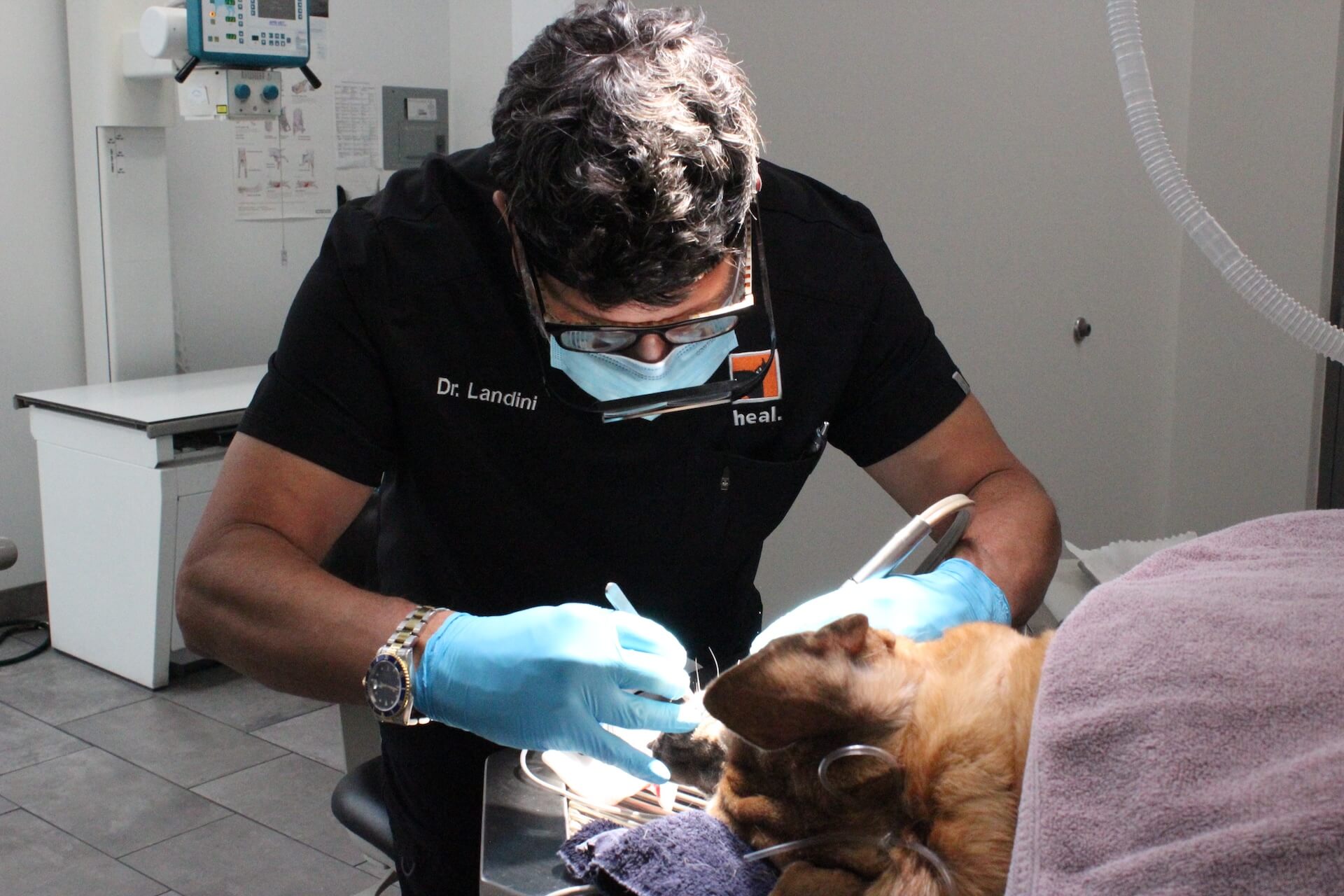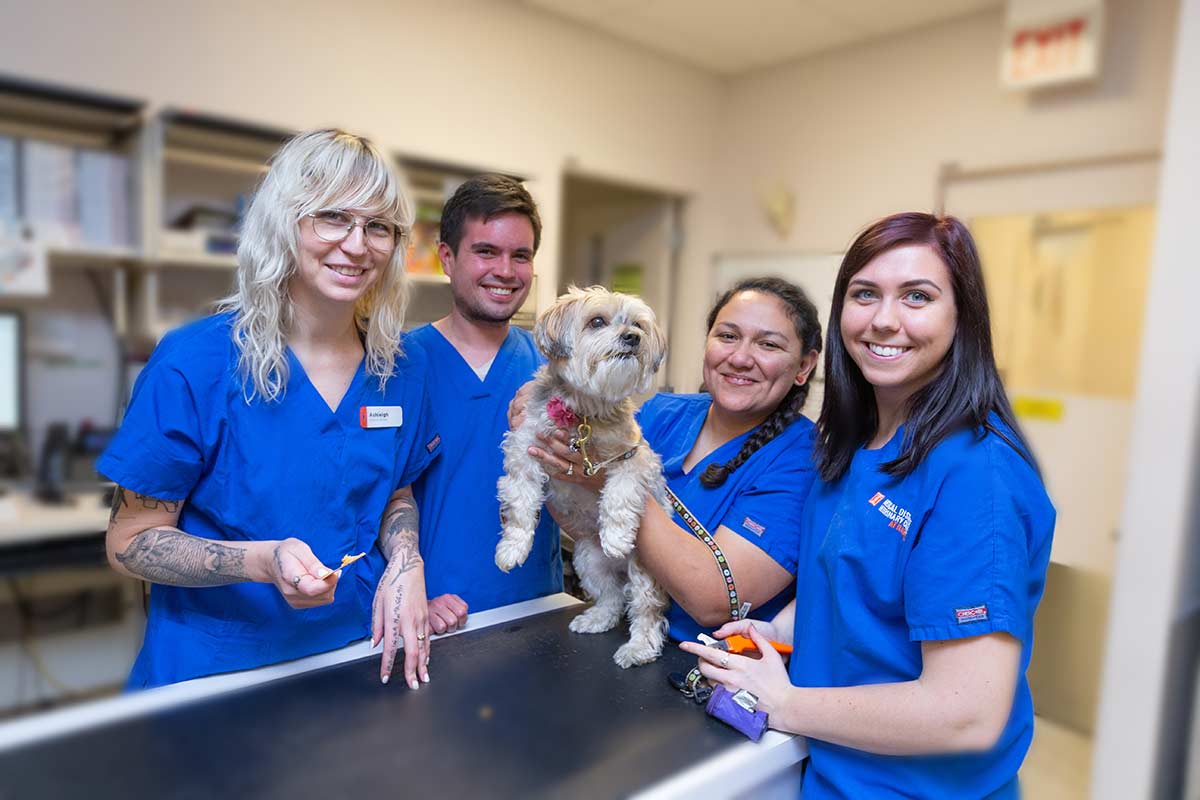Everything About Vet Surgical Procedure: Recognizing the Relevance of Professional Look After Your Animals
Veterinary surgery is a vital part of pet dog health care. It includes various treatments, from regular optional surgical procedures to immediate treatments. Recognizing the complexities of these surgical procedures can help animal proprietors make notified decisions. The preparation, execution, and healing phases are essential for ensuring the wellness of animals. With correct expertise, proprietors can navigate the complexities of vet care. What factors should be thought about before an animal goes through surgical treatment?
Kinds Of Veterinarian Surgeries
When a family pet needs surgical treatment, comprehending the numerous kinds of vet surgeries can aid pet proprietors make educated choices. Vet surgeries can be extensively classified into 3 main kinds: optional, immediate, and emergency surgical treatments. Elective surgical procedures, such as spaying or neutering, are intended procedures that are not promptly serious. Urgent surgical procedures, like those for foreign body removal, need to be executed soon yet are not deadly in the minute. Emergency situation surgeries, such as those addressing severe injury or inner blood loss, are important and call for instant attention.Additionally, surgical procedures can differ in intricacy, varying from minimally intrusive laparoscopic procedures to more considerable open surgical procedures. Each sort of surgery lugs its very own dangers and recovery processes. Recognizing these groups enables pet dog proprietors to involve in significant discussions with vets, leading to better results for their precious animals.
Planning for Your Pet dog's Surgery
Getting ready for a pet dog's surgery entails a comprehensive checklist to ensure all essentials are covered. Efficient communication with the vet is important for comprehending the treatment and any kind of necessary pre-operative steps - animal emergency care bellingham. Additionally, having clear post-operative treatment instructions will certainly aid owners give the very best support for their recovering family pets
Pre-Surgery Checklist Basics
Ensuring a smooth medical experience for a family pet needs careful prep work and focus to detail. A pre-surgery checklist is important for pet dog owners to adhere to. Validating the set up surgical treatment date and time is essential. Proprietors ought to also confirm that their family pet has actually fasted according to the veterinarian's directions, normally for 8-12 hours prior to surgical treatment. Gathering necessary clinical records, consisting of vaccination history, is very important for the veterinarian's testimonial. It is also suggested to prepare a comfy room in the house for the pet's recovery after surgical treatment. Proprietors ought to have a plan for transport to and from the veterinary clinic, making sure that the animal is safe and comfy throughout the journey. Following these steps can significantly boost the surgical experience.
Interacting With Your Veterinarian

Effective communication with the veterinarian is necessary for an effective surgical experience for family pets. Owners ought to be prepared to review their pet dog's medical background, including any type of pre-existing problems, drugs, and allergic reactions. This information assists the veterinarian analyze risks and tailor the surgical plan as necessary. Additionally, pet proprietors must ask questions regarding the procedure, anesthesia, and anticipated results to guarantee they fully comprehend the procedure. Making clear any type of uncertainties can relieve stress and anxiety for both the pet dog and the proprietor. It is likewise crucial to communicate any behavioral modifications or issues observed in the pet leading up to the surgical treatment. Eventually, clear dialogue promotes trust and collaboration, making sure that pet dogs receive the very best possible care throughout their medical journey.
Post-Operative Treatment Recommendations
After reviewing the medical procedure with the vet, pet dog proprietors ought to concentrate on post-operative treatment directions to help with a smooth recovery for their animals. These guidelines generally include keeping track of the surgical website for indications of infection, such as inflammation or discharge. Pet dogs may need to be maintained calm and constrained to stop extreme activity that can disrupt healing. Discomfort monitoring is crucial, so owners ought to comply with the vet's advice on providing medications. In addition, nutritional restrictions might be suggested to stay clear of gastrointestinal distress. Routine follow-up consultations are necessary to assure proper recovery and attend to any type of problems. By sticking to these post-operative treatment guidelines, pet dog owners can significantly add to their pet dog's healing and overall wellness.
The Surgery Explained
The surgical procedure for family pets encompasses important actions that ensure their security and recovery. Pre-surgery prep work are crucial for decreasing risks, while post-operative care standards play an essential function in advertising recovery. Recognizing these parts aids pet dog proprietors navigate the medical experience better.
Pre-Surgery Preparations
Before a family pet undergoes surgical procedure, numerous important prep work must occur to ensure a risk-free and effective treatment. A detailed vet evaluation is necessary to examine the animal's overall health and wellness and determine any type of potential threats. This may consist of blood tests, imaging, or other diagnostics. The veterinarian will certainly likewise talk about anesthetic alternatives tailored to the pet dog's particular demands. Additionally, family pet proprietors are typically instructed to withhold food and water for a specified time prior to surgery to decrease the threat of difficulties during anesthesia. It is necessary for owners to provide a complete case history, including any kind of medicines or allergic reactions, ensuring the surgical team has all required info. Appropriate interaction and adherence to pre-surgery standards can considerably boost the end result of the treatment.
Post-Operative Treatment Guidelines
Correct post-operative care is important for making sure a pet's healing adhering to surgical procedure. After the treatment, pet dogs must be kept an eye on very closely for any signs of complications, such as too much bleeding, swelling, or uncommon behavior. It is essential to follow the veterinarian's instructions relating to medicines, including painkiller and prescription antibiotics. Pets need to be kept in a peaceful, comfy environment to lower anxiety and advertise healing. Restricting task is crucial; short, leashed walks may be necessary, but jumping or running need to be avoided. Routine follow-up consultations need to be scheduled to analyze the recovery procedure. Additionally, the medical site must be kept clean and completely dry, with any type of signs of infection reported to a veterinarian quickly. Sticking to these standards boosts recovery outcomes.
Anesthetic and Discomfort Monitoring
Efficient anesthetic and pain administration are vital components of veterinary surgery, ensuring that pet dogs stay comfortable and safe throughout the treatment. Vets examine each family pet's individual demands, taking into consideration factors such as age, weight, health and wellness status, and the kind of surgical treatment being performed.Anesthesia methods generally consist of a mix of pre-anesthetic drugs, induction representatives, and inhalant anesthetics, enabling precise control over the animal's degree of consciousness. Surveillance during surgical treatment is vital; veterinarians continuously observe important indicators to deal with any possible problems promptly.Pain management techniques may include opioids, non-steroidal anti-inflammatory medicines (NSAIDs), and anesthetics, tailored to the family pet's specific scenario. This multifaceted technique helps reduce pain and advertises a smoother medical experience. By focusing on efficient anesthesia and discomfort administration, vet specialists enhance the overall welfare of pets undertaking operations, guaranteeing they get the highest criterion of treatment.
Post-Operative Treatment and Healing
Complying with surgical treatment, the emphasis moves to post-operative treatment and recuperation, which emergency pet care is crucial for making certain a family pet's risk-free return to typical activities. During this duration, family pets call for a peaceful, comfy environment to help recovery. Proprietors should carefully check their animals for any signs of discomfort or uncommon behavior.Veterinary guidelines commonly include particular instructions associated with medication management, injury treatment, and nutritional modifications. It is essential read to adhere to these recommendations to minimize difficulties and advertise healing. Pets may require to be limited from energetic tasks, such as running or jumping, throughout their recovery period (emergency vet).Regular follow-up appointments with the vet allow for surveillance of the family pet's progress and timely modifications to the care plan. Giving emotional support and companionship can likewise boost an animal's recuperation experience, helping to reduce anxiety and anxiety. Generally, diligent post-operative care plays a significant role in accomplishing an effective healing
Recognizing Difficulties After Surgery
How can pet dog proprietors identify difficulties after surgical treatment? Recognition of particular signs is vital for guaranteeing the well-being of family pets during healing. Usual signs include too much swelling, redness, or discharge at the surgical site, which might symbolize infection. In addition, relentless discomfort, shown by grumbling or hesitation to move, must motivate instant focus. Changes in appetite or water intake can also indicate difficulties; a reduction in these actions may signal pain or distress.Moreover, pet proprietors should check their animals for any kind of uncommon actions, such as lethargy or trouble breathing, as these can be signs of major concerns. Throwing up or looseness of the bowels adhering to surgery may require urgent veterinary assessment. Acknowledging these complications early can considerably affect a pet dog's healing procedure, emphasizing the importance of vigilance and punctual interaction with a vet for any type of concerning signs and symptoms.
The Function of Veterinary Professionals in Surgical Treatment
Veterinary experts play a necessary role in guaranteeing the safety and security and success of procedures for family pets, particularly complying with surgical treatment when monitoring and care are extremely important. These professionals include veterinarians, veterinary technicians, and assistance staff, every one of whom add specialized skills to the medical process.Before surgical treatment, vets conduct thorough evaluations to analyze the animal's health and wellness, making sure that any type of underlying problems are handled. Throughout the procedure, the surgical team offers anesthetic, maintains clean and sterile settings, and keeps an eye on vital signs, very important for minimizing risks.Post-operative care is similarly considerable; veterinary professionals observe for complications, manage pain, and overview owners on recovery methods. Their competence allows them to acknowledge early indications of distress or infection, ensuring timely intervention. Eventually, the collective efforts of vet experts in surgical care promote a secure atmosphere, promoting the wellness of pet dogs throughout the surgical trip.

Frequently Asked Concerns
Just how Do I Choose the Right Vet Specialist for My Animal?
Picking the ideal veterinary cosmetic surgeon includes investigating credentials, reviewing testimonials, and reviewing the center's setting. It is crucial to review the doctor's experience with specific procedures and their communication style when choosing.
What Prevail Misconceptions Concerning Vet Surgeries?
Typical misunderstandings about veterinarian surgical treatments consist of beliefs that they are always risky, unnecessary, or for emergency situations. Numerous pet proprietors take too lightly the advantages of precautionary procedures and the skill entailed in veterinary medical treatment.
Just How Much Will My Family pet's Surgical treatment Cost?
The cost of a pet dog's surgery can differ considerably based upon aspects such as the type of procedure, the index veterinarian's experience, and geographical area (emergency vet near me). Typically, expenses range from a few hundred to numerous thousand bucks

Can My Family Pet Eat Prior To Surgical Treatment?
Before surgery, it is typically encouraged that family pets avoid eating for a particular period. This fasting helps in reducing the risk of issues during anesthesia. Owners need to consult their vet for precise directions tailored to their family pet's needs.
Suppose My Pet Dog Has Pre-Existing Wellness Conditions?
When a pet dog has pre-existing health and wellness conditions, it's essential for the vet to analyze these aspects prior to surgical treatment. This examination assurances appropriate precautions are taken, minimizing risks and enhancing the pet dog's overall safety and security during the treatment.
Comments on “How to Find an emergency vet near me Before You Actually Need One”